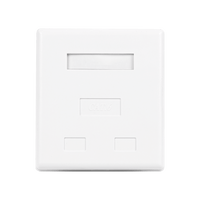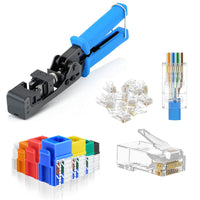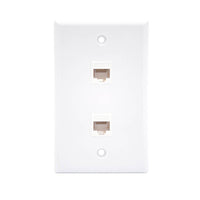Contents
Safety is paramount for people who work with electrical equipment and systems. Electricians, in particular, rely on multimeters and other test tools to perform their job safely and effectively. Multimeters and other test tools are crucial for people working in the electrical world, especially for electricians. One of the important factors to consider for the electricians category rating system. Read on for more information.
What Does CAT Rating Mean in Electrical Systems?
CAT is a standard developed by the International Electrotechnical Commission (IEC) for safe measurements and tests for various electrical devices. The category measures the total continuous energy with a live circuit, transient voltage, or short circuit condition.
There are four CAT ratings, including CAT I, CAT II, CAT III, and CAT IV. It is essential to verify the appropriate CAT rating for your specific measurements to ensure safety.
(Note: The CAT rating system indicates the level of transient that the device or tool can endure. Transient voltage is the electrical energy that lasts for a short time. It varies in size and duration, which is often caused by lightning strikes, arcing, and generators’ ONs and OFFs. These surges can reach several thousand volts, potentially causing electrical shocks and damage to the equipment.)
Why are CAT Ratings Important?
Electric incidents, such as electric strikes and arc blasts, pose risks to human bodies and even put people’s lives at risk. Though the electricians are equipped with protective and insulated clothing on their bodies, using the right tools is also equally crucial for ensuring safety.
The CAT ratings can help electricians choose the right tool capable of dealing with the transient voltages in the electrical system. By using tools with the correct CAT ratings, it is possible to avoid fatal accidents and ensure a safe working environment.
CAT Ratings Explained
In the CAT rating system, the Roman numerals symbolize the location of the circuit relative to the power source. Each CAT rating has two parameters: one defines the electrical system level, and the other indicates the operating voltage. We’ll further explore four CAT ratings in the following content.

CAT I
CAT I is the lowest category among the four, which is used to measure applied to circuits not directly connected to the power source. It is generally used for low-voltage and low-energy circuits. High-voltage but low-energy circuits are also suitable for CAT I. Examples of CAT I applications include laptops, PCs, and other protected electronic equipment and small household appliances.
CAT II
Unlike CAT I, CAT II is designed to measure the circuits directly connected to the power source (like socket outlets or plug-in loads). Defined as local-level electrical distribution, CAT II is suitable for household appliances like fridges, water heaters, and portable power tools (eg: drills, and hair dryers). In brief, CAT II is suitable for single-phase AC loads.
CAT III
CAT III is used for distribution-level voltages. It tests and measures circuits directly connecting CAT II and CAT IV. It is designed for measurements of the electrical system inside the building installation like fixed installation (eg: switchgear and distribution boards), industrial equipment (eg: feeders and stationary motors junction boxes), wirings, and industrial lighting systems.
CAT IV
CAT IV is the highest level of the four ratings. It tests and measures high-energy and severe environments. Typically, it is used for measurements at or near the power source of low-voltage installation. Examples of CAT IV include power electricity meters and outdoor power lines (overhead or underground). Main service panels, and low-voltage, high-energy connections are also suitable for CAT IV.
CAT rating is designed to provide a straightforward standard to help people choose the right tool for safe electrical measurements. Within the four ratings, the IEC supplies a quick-reference chart, allowing users to easily check the transient voltages of each CAT rating.

What Are CAT Ratings for Ethernet?
CAT ratings are not exclusive to the electrical industry; they also exist in Ethernet cables. These ratings are used to categorize Ethernet cables into different types, such as CAT3, CAT5, CAT5E, CAT6, CAT6A, CAT7, and CAT8. CAT5E and CAT6 cables are most commonly used for small home networks, and CAT6A, CAT7, and CAT8 Ethernet cables are generally used for large network installation. In general, the larger the number, the better performance the cable can provide. For example, CAT6 can reach the maximum network speed of 10 Gbps within 37-55 meters, but CAT6A cables can achieve 10 Gbps within 100 meters. These Ethernet cables play a crucial role in network transmission and they are used with RJ45 connectors to connect routers or switches.
Conclusion
In order to ensure electrical safety, it is necessary to understand CAT ratings. With the help of CAT ratings, people can choose the right tool for measurements and tests in the electrical system. Though some manufacturers may overlook CAT ratings and produce some tools without CAT ratings, it is always advisable to select tools that conform to CAT ratings for safety when handling electricity.
For more information on this topic, you can keep up on our blogs. While VCELINK offers general and basic information for our customers and other visitors to the website, it’s not professional advice.






Be the first one to comment.
Leave a comment